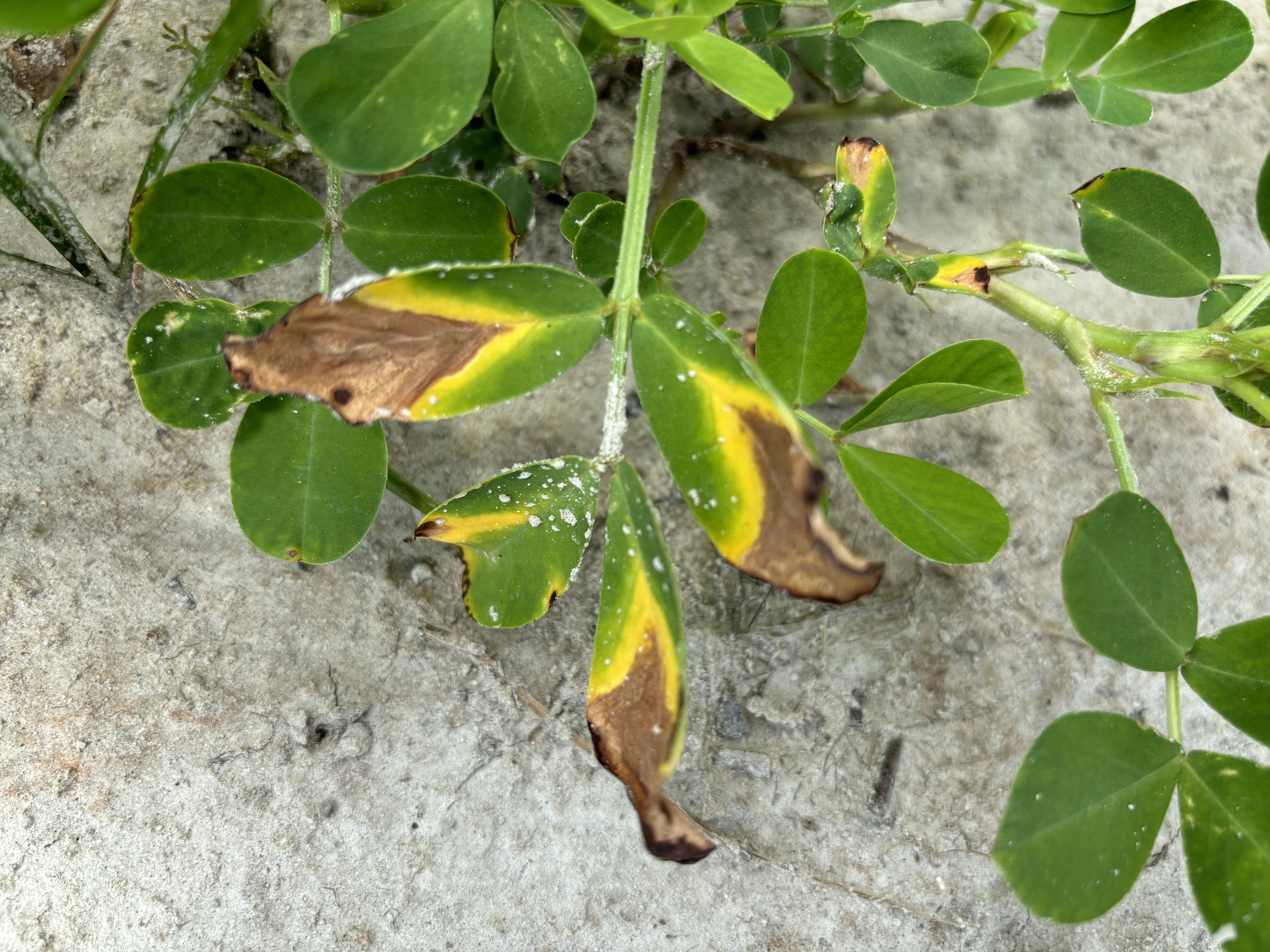Leaf Scorch Peanut Notes No. 113 2024
go.ncsu.edu/readext?1009654
en Español / em Português
El inglés es el idioma de control de esta página. En la medida en que haya algún conflicto entre la traducción al inglés y la traducción, el inglés prevalece.
Al hacer clic en el enlace de traducción se activa un servicio de traducción gratuito para convertir la página al español. Al igual que con cualquier traducción por Internet, la conversión no es sensible al contexto y puede que no traduzca el texto en su significado original. NC State Extension no garantiza la exactitud del texto traducido. Por favor, tenga en cuenta que algunas aplicaciones y/o servicios pueden no funcionar como se espera cuando se traducen.
Português
Inglês é o idioma de controle desta página. Na medida que haja algum conflito entre o texto original em Inglês e a tradução, o Inglês prevalece.
Ao clicar no link de tradução, um serviço gratuito de tradução será ativado para converter a página para o Português. Como em qualquer tradução pela internet, a conversão não é sensivel ao contexto e pode não ocorrer a tradução para o significado orginal. O serviço de Extensão da Carolina do Norte (NC State Extension) não garante a exatidão do texto traduzido. Por favor, observe que algumas funções ou serviços podem não funcionar como esperado após a tradução.
English
English is the controlling language of this page. To the extent there is any conflict between the English text and the translation, English controls.
Clicking on the translation link activates a free translation service to convert the page to Spanish. As with any Internet translation, the conversion is not context-sensitive and may not translate the text to its original meaning. NC State Extension does not guarantee the accuracy of the translated text. Please note that some applications and/or services may not function as expected when translated.
Collapse ▲I started an email discussion with Dan Anco, peanut pathologist at Clemson, about leaf scorch. Here is the image we discussed along with the discussion.
Symptoms can overlap with leaf scorch and thimet burn, if thimet was applied and there are several places where it is more or less symmetrical, I tend to associate it with thimet; I would not be surprised if there was an association between the two, the leaf scorch fungus has been described as an effective secondary colonizer; leaf scorch can look just like that but is not obligated to symmetrical development.
Jordan comments to a text question about leaf scorch:
Chemical burn and not something to spray for. Leaf scorch is a secondary disease. The pathogen is opportunistic and no spray is needed. It only affects leaves that have some previous injury, in most cases.



